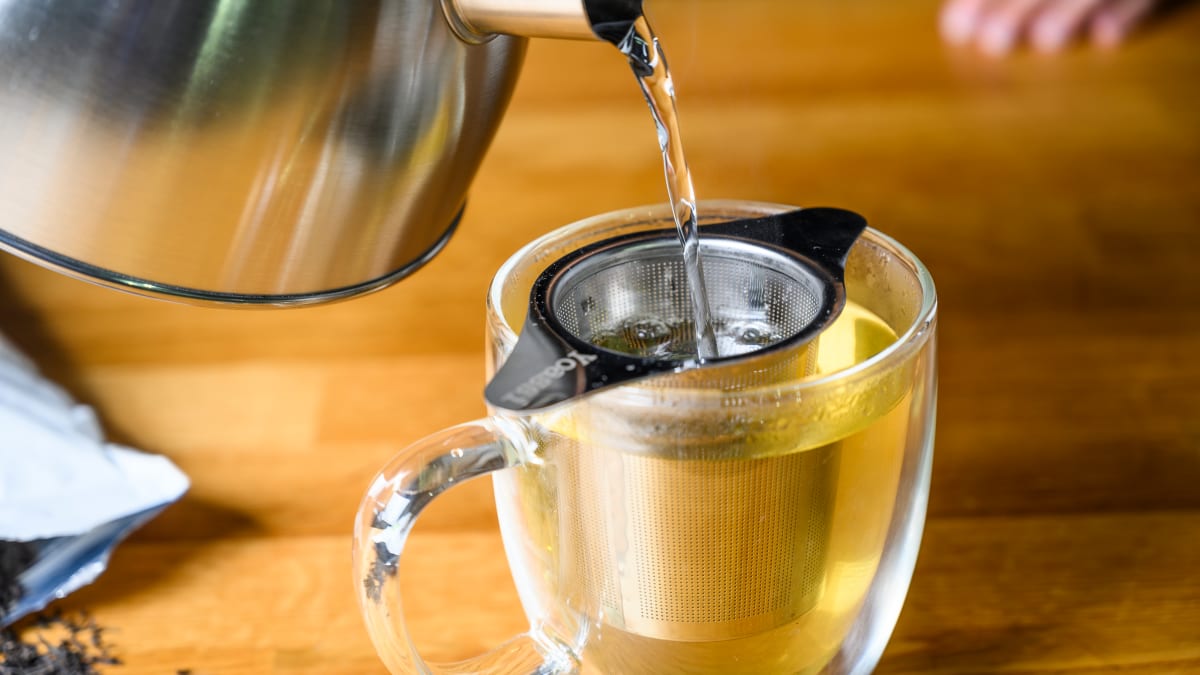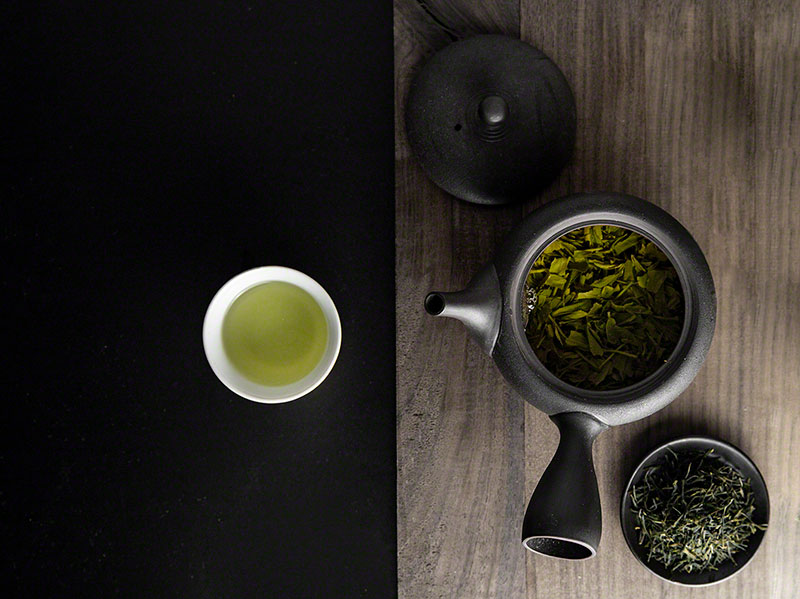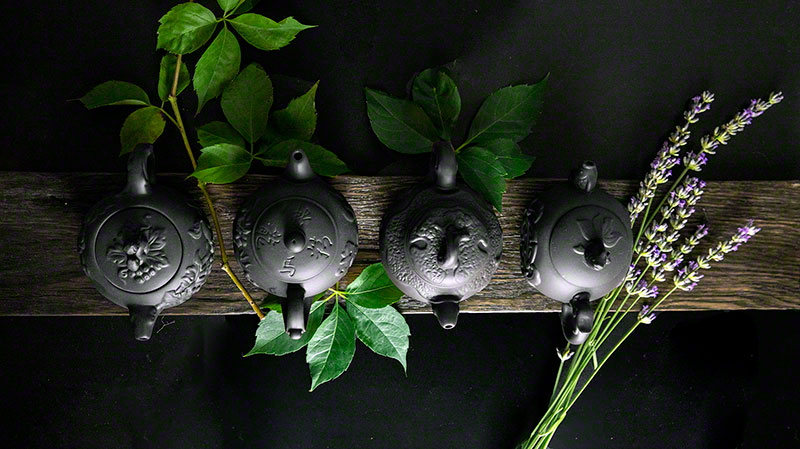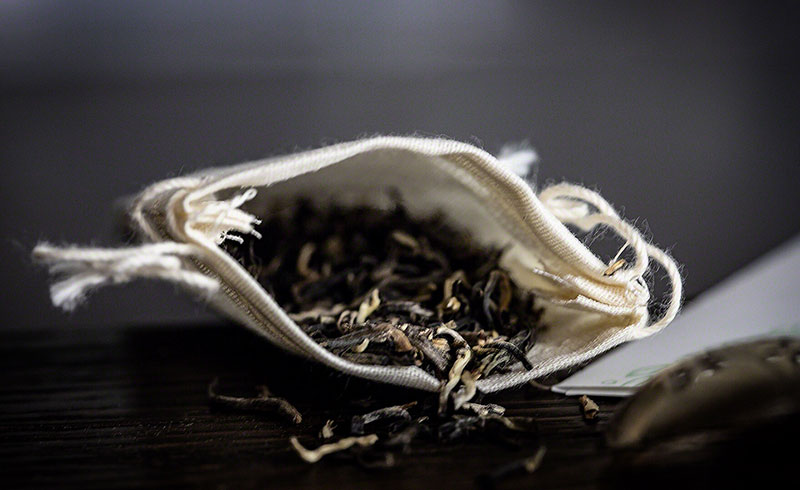Making a perfect cup of tea is often not as easy as it sounds. Besides water temperature, steeping time and having quality teas, choosing the right tea utensils will make a difference between a good and bad cup of tea. It will also save you a lot of hassle and time. Some tea utensils can be used with almost any tea type, while others are more suitable for specific teas.
Teapots are the best option for brewing any real tea. Every tea producing country has a strong tradition in teaware production. Some pieces of teaware are more than just utensils, they are an art, and often reach prices worthy of masterpieces. The main difference between western and eastern teapots is the size. Tea in the West is usually prepared in a large teapot and drank from bigger cups or mugs. Teapots are a must for brewing tea for 2 or more people. Use western-style teapots for low, medium and high quality leaves and tea bags that you plan to steep only once. They are usually dishwasher safe.
Tea infusers and tea steepers are the same type of tea tool. They both come in a variety of shapes and sizes, but ultimately they are reusable metal or plastic tools with mesh or holes that hold loose tea.

Teapot with a strainer
Western-style teapots with a strainer a good for large loose leaf tea because holes are usually too big to hold small particles. They are great for everyday and flavored teas.
Good for:
- Everyday tea
- Teas that you usually brew only once
- Tea with medium to big leaf
- Brewing large quantity of tea at once
- Beginners
- Easy to clean
Not suitable for:
- Tea with tiny particles
Tea to try: Ceylon Orange Pekoe
In the East, teapots are sometimes smaller than 100 ml, but enough for at least 2 people to enjoy the brew from tiny 20-30 ml cups. Smaller teapots usually need a lot of tea leaves, sometimes even half-filled, to enjoy every little flavor and aroma nuance. All eastern-style teapots are perfect for multiple-steeping technique. Use for medium to high quality leaves. Don’t use detergent for cleaning eastern-style teapots and always preheat them before use.
Japanese-style teapot is called kyusu. It usually has a side handle, and it’s easy to use even for beginners. Kyusu can have a metal filter, removable or attached, or a pre-made ceramic mesh. Some kyusu teapots have a regular handle instead. Kyusu with a removable stainless steel mesh will be a great choice for almost any tea except rooibos. It is very easy to clean and makes tea sessions very easy and enjoyable. The best size would be from 200-300 ml, enough for 2 people to enjoy tea from 100 ml cups.
Good for:
- High-quality loose tea
- Japanese tea
- Teas that you want to re-brew
- Suitable for all real tea
- Easy to clean if it has a removable mesh, acceptable with ceramic mesh, difficult with attached metal mesh
- Beginners
Not suitable for:
- Tea with tiny particles
Tea to try: Genmaicha

Houhin is a Japanese-style tea vessel without a handle and with a small spout. It’s good for brewing teas that don’t require boiling water. Houhin is usually tiny and used for gyokuro and sencha, all brewed with 50-75 degrees Celsius. It’s inappropriate for brewing black, oolong, white or pu’erh tea. They are more suitable for advanced tea drinkers.
Good for:
- High-quality loose tea
- Japanese tea
- Teas that require low water temperature
- Tea with smaller particles
- Advanced drinkers
- Easy to clean
Not suitable for:
- Types except green teas
Tea to try: Japanese Sencha
Tetsubin is a cast iron Japanese teapot. Original tetsubins don’t have an enamel on the inside and can tolerate high temperatures and even boiling tea water on the stove. Modern tetsubins with an enamel coating are good for brewing tea, but shouldn’t be used for heating water. They are a great choice for larger tea leaves, more robust flavors.
Good for:
- Japanese tea
- Teas that require high water temperature
- Roasted and more robust-flavor teas
- Intermediate drinkers
- Easy to clean
Not suitable for:
- Tea with tiny particles
Tea to try: Pan-fired Green
The most difficult tea vessel is also the simplest one. Having only a cup and a lid, mastering the use of gaiwan can be demanding, but will offer a whole range of brewing possibilities. They are great for all Chinese teas, but we recommend starting with those that require lower water temperature. Gaiwan is not suitable for brewing sencha or teas with smaller particles, or teas that require long steeping time. They are very easy to clean and very portable. They are a must if you want to use multiple-steeping technique. Size ranges from 50 to a around 200 ml.
Good for:
- Any Chinese tea
- Leaves that you want to re-steep
- Advanced drinkers
- Very easy to clean
Not suitable for:
- Herbal teas and teas with small particles
- Teas that require long steeping time
Tea to try: Mao Feng
Zisha is a purple clay teapot used in China most suitable for oolong, pu’erh and black tea. They are usually tiny and made from unglazed clay. Ideally, use only one tea type per Yixing zisha, and allow it to accumulate a coating. They are great for high-quality tea and teas that you can brew 5+ times even with boiling water.
Good for:
- Any Chinese tea
- High-quality leaves
- Leaves that you want to re-steep
- Teas that require high water temperature
- Intermediate drinkers
- Easy to clean
Not suitable for:
- Herbal teas and teas with small particles
Tea to try: Qi Lan Oolong

Infusers come in different shapes and sizes. They are made from metal, glass, plastic, ceramics or even wood. Unlike tea strainers, tea infusers usually hold a certain amount of tea leaves, and release flavor from small holes. They are a good option for tea blends and flavored teas that you plan to steep only once and when you are making tea for one person only. Use them for lower to medium quality tea. The biggest disadvantage is that removing them from your cup might get messy.
Tea balls are a great choice for tea leaves that don’t need to expand. They will be suitable for some green tea, pu’erh tea, some black tea, and most herbal teas. You shouldn’t use them for oolongs or big leaf loose leaf teas or rooibos. Rooibos has a very small particles that will end up in your cup. Out of all tea infusers, they can hold the least amount of tea leaves.
Good for:
- Tea that doesn’t need a lot of space to expand
- Fruit and herbal tea
- Beginners
- Easy to clean
Not suitable for:
- High quality tea
- Tea with tiny particles
- High quality tea that you want to re-steep 3+ times
Tea to try: Vedic Healer
Eggs are similar to tea balls and spoons, but they can hold a bit more tea leaves. Don’t use them with leaves that need to expand or leaves with tiny particles. Modern-style eggs come in different shapes and different materials.
Good for:
- Tea that doesn’t need a lot of space to expand
- Fruit and herbal tea
- Beginners
- Easy to clean
Not suitable for:
- High quality tea that you want to re-steep 3+ times
- Tea with tiny particles
Tea to try: Simple Blueberry Herbal
Brewing baskets are better than balls and eggs because their size allows tea leaves to expand better. They are great for small and big leaf, real teas and tisanes. You can easily remove the infusing basket for your cup and re-steep the leaves later.
Good for:
- Any tea, depending on the mesh
- Leaves that need space to expand
- Tea that requires high water temperature
- Beginners
- Easy to clean
Tea to try: Honey Ginger Chamomile
Paper filters are a great choice for teas with very small particles, and those that have an intense flavor. Don’t brew teas with a delicate flavor using paper filters because you will end up with a paper-tasting tea. Paper filters are good for pu’erh tea, black tea and most herbal teas including rooibos. They are good for one use only.
Good for:
- Tea with tiny, small, medium and large leaves
- Tea that you want to steep once or twice
- Beginners
- Disposable
Not suitable for:
Tea to try: Honeybush Herbal
Cotton filters are re-usable and can be used for almost any tea type. Unlike paper filters they won’t make tea taste like paper and you can use them with delicate teas as well. They are great for blended teas.
Good for:
- Tea with tiny, small, medium and large leaves
- Tea that you want to steep once or twice
- Might be difficult to clean
- Beginners
Tea to try: Herbal Pinacolada

Teapot without a strainer
Western-style teapots are usually made from ceramics or porcelain. They are bigger than most eastern teapots and most suitable for brewing tea in tea bags for 2+ people. Although you can brew loose leaf tea in a western-style teapot without a strainer, you will need a portable strainer for pouring tea into cups. They are best for flavored or everyday tea.Good for:
- Tea bag
- Big leaf everyday tea
- Brewing large quantity of tea at once
- Beginners
- Easy to clean
Not suitable for:
- Teas with small particle
- Delicate tea that you want to re-steep
Tea to try: Rose Grey
Tea Infuser Comparison
FAQ
What is the difference between a tea strainer and an infuser?
What is a tea steeper called?
What is another name for tea infuser?
|
tea ball
|
infuser
|
|
tea strainer
|
infusion ball
|
|
tea egg
|
tea filter
|
|
tea maker
|
|
What is a tea infuser & steeper?
These infusers and steepers are typically placed inside the teapot or tea cup or included as part of a travel mug. Tea infusers go by several names, like tea balls, tea makers, tea steepers, and tea eggs. Originally made from bamboo, the tea steeper came from the Tang Dynasty in ancient China.
What type of coffee or tea can one drink?
The tea bag itself is not harmful to health, but because of the packaging chosen by certain companies, microplastics can occur and cause damage to health. The best coffees are of the Arabica type, they have an intense aroma and sweetness with many variations of acidity, body and flavor.
Can You brew tea with a steeper or infuser?
For others, it can be an elaborate art form like a Japanese tea ceremony. To brew tea using a steeper or infuser sits somewhere in the middle. Brewing tea takes patience, practice, and, of course, the right tools, like tea steepers and infusers, to bring out the full flavor of loose-leaf teas.
What is a tea steeper?
A tea steeper, often referred to as a tea infuser, is a simple yet indispensable tool for brewing loose leaf tea or tea bags. It’s designed to hold the tea leaves or herbs while they steep in hot water, ensuring that you get a flavorful and aromatic cup of tea. When it comes to tea steepers, you’ll find a variety of options to choose from.
